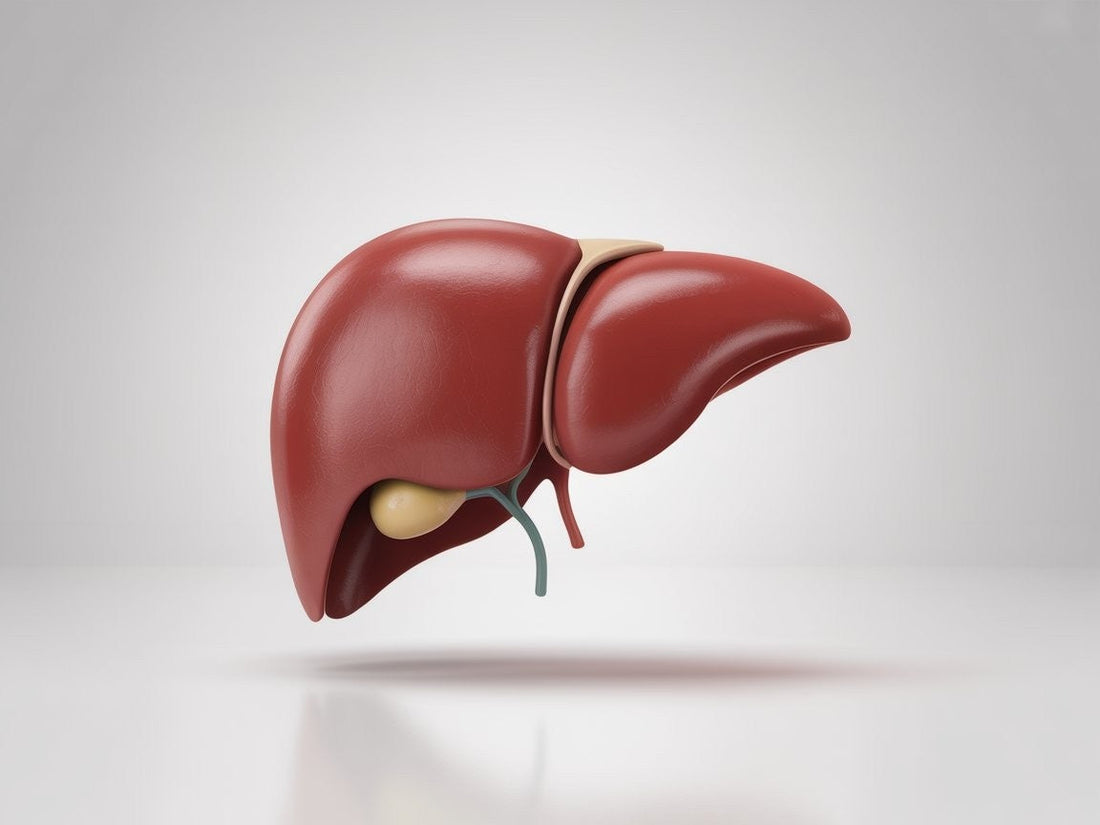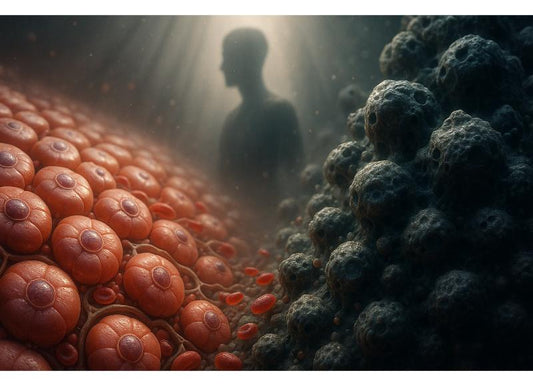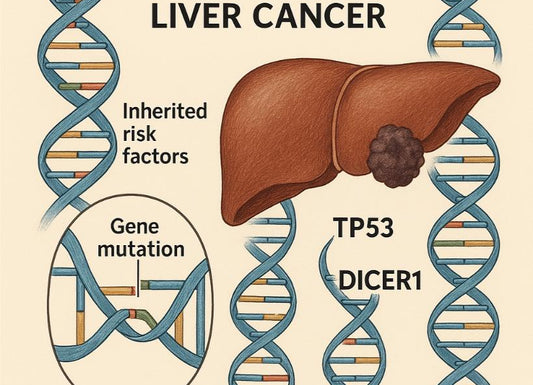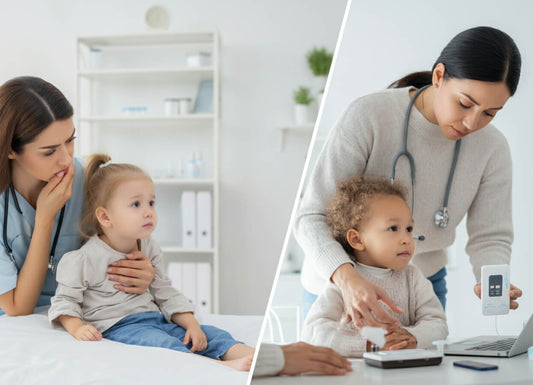Gallbladder Pain vs. Liver Pain: How to Tell the Difference
 Written By
Abel Tamirat, MD
Written By
Abel Tamirat, MD

Gallbladder pain and liver pain can feel similar. Both are felt in the upper right part of your abdomen, and both can cause discomfort that affects your daily life. But they have important differences in how the pain feels, when it happens, and what other symptoms may appear.
Knowing the difference can help you talk clearly with your healthcare provider, get the right tests, and receive treatment sooner. This guide will help you understand the signs, causes, and treatments for each in plain language.
Why is it important to tell gallbladder pain from liver pain?
You have two organs: your liver and gallbladder which work closely together to help you digest food and remove waste from your body. They sit next to each other in your upper right abdomen, just under your ribs.
Because they are close together, pain from either one can feel like it’s coming from the same spot. However, the causes, urgency, and treatment for each type of pain can be very different. For example:
-
Gallbladder pain may be due to gallstones, which sometimes require surgery.
-
Liver pain may be caused by inflammation, infection, or long-term damage.
If you can describe your pain clearly when it starts, how it feels, and what makes it worse, your doctor can make a more accurate diagnosis.
Liver pain can present in various ways depending on the cause.
Where are the liver and gallbladder, and what do they do?
Liver:
Your liver is the largest internal organ in your body. It cleans your blood, stores energy, processes nutrients, makes proteins, and helps digest fats by producing bile.
Gallbladder:
Your gallbladder is a small pouch under the liver. It stores and releases bile into the small intestine after you eat — especially after fatty meals.
They are connected by bile ducts, which carry bile from the liver to the gallbladder and then to your small intestine.
Learn more about what can be mistaken for liver pain and how to avoid confusion.
How does gallbladder pain usually feel?

Gallbladder pain happens when bile flow is blocked or the gallbladder becomes inflamed.
Common features include:
-
Location: Right upper abdomen, under the ribs. May spread to the right shoulder or between the shoulder blades.
-
Onset: Often sudden and intense.
-
Type of pain: Sharp or cramping, sometimes described as “gripping.”
-
Timing: Usually begins 30 minutes to a few hours after eating a fatty or greasy meal.
-
Duration: Lasts from minutes to hours, then eases. You may have pain-free periods in between attacks.
Other symptoms you may notice:
-
Nausea or vomiting
-
Bloating or indigestion
-
Sweating or chills during pain episodes
Common causes:
-
Gallstones (cholelithiasis): Hardened deposits in the gallbladder that can block bile flow.
-
Acute cholecystitis: Inflammation of the gallbladder, usually from gallstones.
-
Biliary dyskinesia: Poor emptying of the gallbladder even without stones.
Inflammation in the liver also causes pain but has a different pattern.
How does liver pain usually feel?
The liver itself does not have pain nerves. You feel liver pain when the outer covering (capsule) stretches due to swelling or injury.
Common features include:
-
Location: Right upper abdomen, under the ribs. Sometimes felt in the right side of your back.
-
Onset: Gradual, not sudden.
-
Type of pain: Dull, aching, or throbbing.
-
Timing: Often constant, not coming and going like gallbladder attacks.
Other symptoms you may notice:
-
Fatigue or weakness
-
Loss of appetite or unexplained weight loss
-
Yellowing of the skin or eyes (jaundice)
-
Itchy skin
-
Dark urine or pale stools
-
Low-grade fever
Common causes:
-
Hepatitis: Inflammation from viruses, alcohol, toxins, or autoimmune disease.
-
Fatty liver disease: Buildup of fat in liver cells, often linked to obesity or diabetes.
-
Cirrhosis: Scarring from long-term liver damage.
-
Liver tumors or cysts: Growths that may be benign or cancerous.
Key differences between gallbladder pain and liver pain
|
Feature |
Gallbladder Pain |
Liver Pain |
|
Onset |
Sudden, often after meals |
Gradual |
|
Type |
Sharp, intense, colicky |
Dull, aching, persistent |
|
Triggers |
Fatty or greasy foods |
Not usually linked to meals |
|
Duration |
Comes and goes |
Constant or slowly worsening |
|
Other symptoms |
Nausea, vomiting, bloating |
Fatigue, jaundice, itching |
Explore signs that your liver may be struggling.
What should you watch for as red-flag symptoms?
See a doctor immediately if you have:
-
Severe or worsening pain that doesn’t go away
-
Fever or chills with abdominal pain
-
Yellowing of your skin or eyes
-
Persistent vomiting
-
Sudden changes in urine or stool color
These symptoms may mean you have a serious infection, bile duct blockage, or severe liver disease.
How will your doctor figure out the cause?

Your healthcare provider may:
-
Take a detailed history: Ask about the location, duration, and timing of your pain, and what triggers it.
-
Do a physical exam: Press on your abdomen to check for tenderness or swelling.
-
Order blood tests: Liver function tests, bilirubin, and inflammatory markers.
-
Request imaging: Ultrasound to check for gallstones, CT or MRI for detailed views.
-
Run special tests: Endoscopic procedures or biopsy if the diagnosis is unclear.
How is gallbladder pain treated?
Treatment depends on the cause:
-
Gallstones causing symptoms: Gallbladder removal surgery (laparoscopic cholecystectomy) is often recommended.
-
Mild cases: Dietary changes to reduce fatty foods.
-
Acute inflammation: Hospital care with antibiotics, fluids, and surgery if needed.
Liver lacerations, although rare, are another potential source of pain.
How is liver pain treated?

Treatment focuses on the underlying cause:
-
Hepatitis: Antiviral medications for viral types; avoid alcohol and certain drugs.
-
Fatty liver disease: Diet changes, exercise, and managing conditions like diabetes.
-
Cirrhosis: Medications to control symptoms; in severe cases, liver transplant.
-
Tumors or cysts: Surgery, medication, or monitoring.
Understand what a liver lesion is and how it might cause discomfort.
How can you protect your liver and gallbladder?
-
Maintain a healthy weight.
-
Eat a balanced diet with plenty of fruits, vegetables, and whole grains.
-
Limit fried and processed foods.
-
Exercise regularly.
-
Limit or avoid alcohol.
-
Get vaccinated for hepatitis A and B.
-
Manage conditions like diabetes and high cholesterol.
The bottom line
Gallbladder pain is usually sharp, sudden, and tied to meals, while liver pain is dull, gradual, and often comes with fatigue or jaundice. Both deserve attention—especially if symptoms are severe or persistent.
When in doubt, get checked. Early diagnosis not only relieves discomfort but can also prevent serious complications.
Not sure what's causing your pain?
Take control of your health from home with a Ribbon Checkup liver test or kidney test. Fast, simple, and lab-accurate—get answers without leaving your house.
Related Resources
-
Liver Pain Location: Understanding Its Causes and Symptoms
Learn how to pinpoint liver pain and distinguish it from gallbladder-related issues. -
What Can Be Mistaken for Liver Pain?
Explore common conditions that mimic liver discomfort, including gallbladder disease. -
Liver Cirrhosis After Gallbladder Removal: Risks, Symptoms, and Prevention
Understand how liver health can be impacted after gallbladder surgery and what signs to watch for.
References
American College of Gastroenterology. (n.d.). Gallstones. https://gi.org/topics/gallstones/
Cleveland Clinic. (2023, June 12). Gallbladder disease. https://my.clevelandclinic.org/health/diseases/22976-gallbladder-disease
Cleveland Clinic. (2024, March 15). Liver disease. https://my.clevelandclinic.org/health/diseases/17179-liver-disease
Johns Hopkins Medicine. (n.d.). Gallbladder disease. https://www.hopkinsmedicine.org/health/conditions-and-diseases/gallbladder-disease
Mayo Clinic. (2024, August 20). Cholecystitis. https://www.mayoclinic.org/diseases-conditions/cholecystitis/symptoms-causes/syc-20364867
Mayo Clinic. (2025, January 15). Nonalcoholic fatty liver disease. https://www.mayoclinic.org/diseases-conditions/nonalcoholic-fatty-liver-disease/symptoms-causes/syc-20354567
National Institute of Diabetes and Digestive and Kidney Diseases. (2020). Gallstones. https://www.niddk.nih.gov/health-information/digestive-diseases/gallstones
Portincasa, P., Moschetta, A., & Palasciano, G. (2006). Cholesterol gallstone disease. The Lancet, 368(9531), 230–239. https://doi.org/10.1016/S0140-6736(06)69044-2
Zakko, S. F., & Afdhal, N. H. (2016). Approach to the patient with liver disease. In M. Feldman, L. S. Friedman, & L. J. Brandt (Eds.), Sleisenger and Fordtran’s gastrointestinal and liver disease (10th ed., pp. 1355–1370). Elsevier.

Dr. Abel Tamirat is a licensed General Practitioner and ECFMG-certified international medical graduate with over three years of experience supporting U.S.-based telehealth and primary care practices. As a freelance medical writer and Virtual Clinical Support Specialist, he blends frontline clinical expertise with a passion for health technology and evidence-based content. He is also a contributor to Continuing Medical Education (CME) programs.



